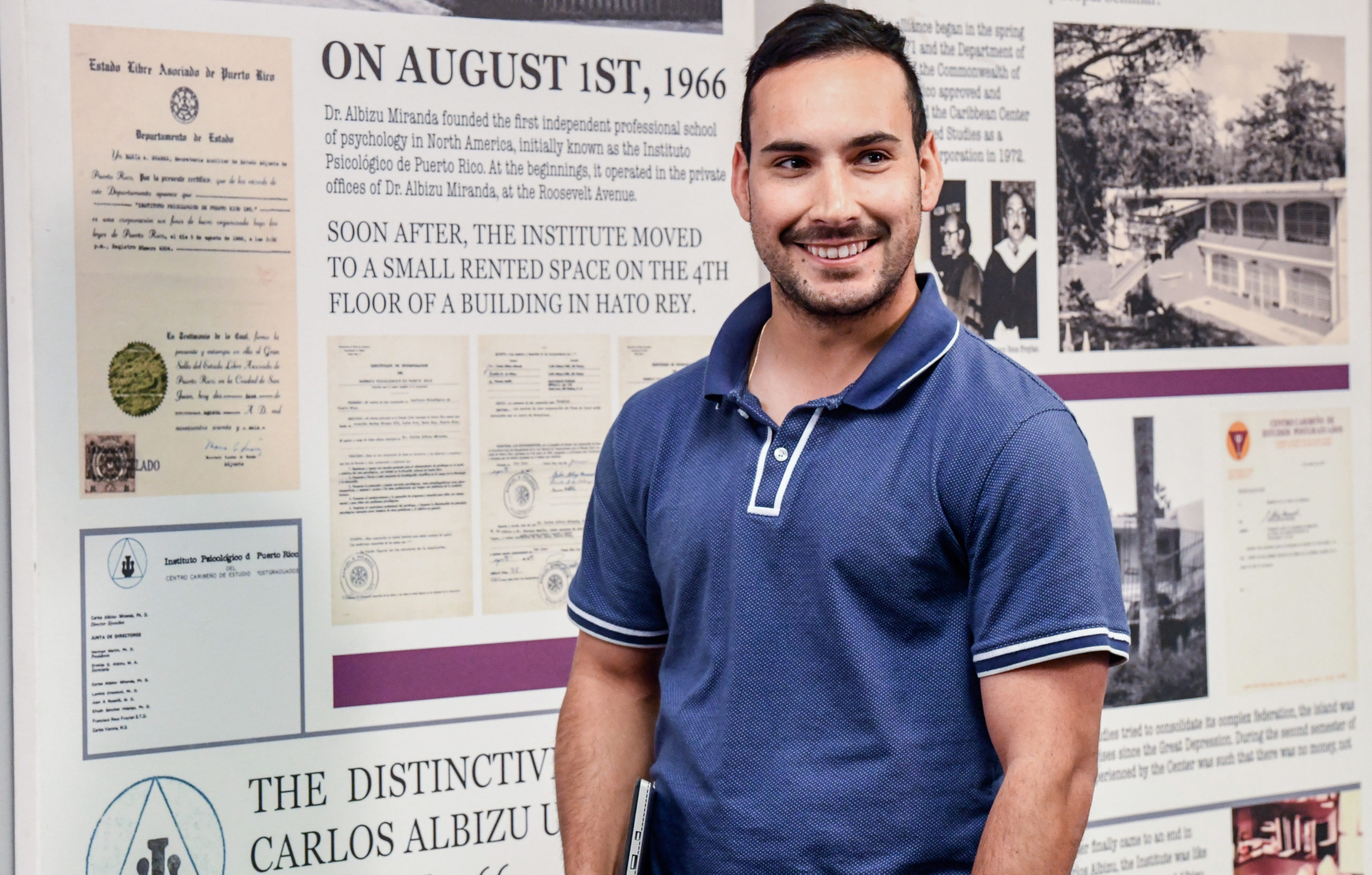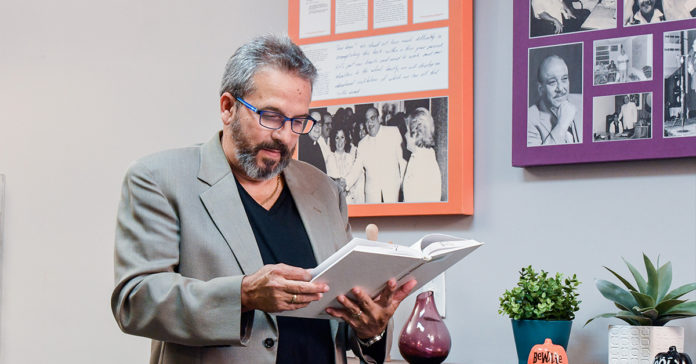Let’s imagine a scenario: it’s hundreds of thousands of years ago and two cavemen meet for the first time in the forest. Spoken language hasn’t been invented yet, so our pair of primitives have to rely on something else to determine friend or foe status – body language. Stance, eye contact, and facial expressions work to actively communicate fear, anger, calm or intrigue and more. Interpreting body language could literally mean the difference between life and death. Now fast forward to today. Humans have advanced, developed intricate verbal languages and amazing technological breakthroughs. But one thing that has remained with us, is our use of body language.
Today, body language continues to be a vital part of our communication. It can emphasize and add to spoken language or still be an effective indicator of mood and state of being without verbal communication. And, for decades now, psychologists and other academic professionals have been studying body language, including facial expression, to see if there are commonalities, indicators and predictors that can be found in human body language.
What are the types of nonverbal communication? Here’s a quick breakdown of the eight main forms:
- Body movements – this can be hand gestures, nodding or shaking of a head and even the easily recognized “thumbs up” gesture.
- Posture – the way one stands or sits can reflect mood and attitude.
- Personal space (Proxemics) – the amount of physical space between people when they communicate can reflect intimacy, alarm, etc.
- Physical contact – the act of touching can convey a variety of emotional states.
- Eye contact – direct or indirect can convey degree of engagement, level of comfort and even hint at honesty/dishonesty.
- Facial expression – a primary indicator of mood and usually easy to read.
- Paralanguage – has to do with volume or tone applied to a vocalization to create emphasis, alarm, etc.
- Physiology – physical aspects that can indicate an emotional state like nervous sweats, tears, rapid pulse, etc.
The Study of Body Language
In the early 1950’s, the anthropologist Ray Birdwhistell coined the term Kinesics to describe the study of posture, gesture, expression and movement as a form of communication. Birdwhistell believed all body movements can work to communicate meaning. As a result of his studies, he estimated that in a social interaction or conversation, only 30 to 35 percent of the context or meaning of the interaction is conveyed by the spoken word.
In the sixties, a clinical psychologist by the name of Dr. Paul Ekman began investigating facial expression. The belief at the time was that facial expressions were determined by an individual’s surrounding culture. Ekman traveled the world, even visiting remote tribes, and showed study participants pictures of men and women displaying a variety of distinctive emotional faces. What Ekman discovered was that everywhere he went, people interpreted facial expressions, for the most part, the same way. Smiling was happy, scowling was angry, etc.
When it comes to nonverbal interactions and their impact on face-to-face communications, the research of psychologist Albert Mehrabian resulted in an interesting theory. Mehrabian devised the 7-38-55 rule, which states that:
- 7% of message pertaining to feelings and attitudes is in the words that are spoken.
- 38% of message pertaining to feelings and attitudes is paralinguistic (the way that the words are said).
- 55% of message pertaining to feelings and attitudes is in facial expression.1
Mehrabian’s work is important because it shows that understanding “meaning” in communication, does not rely solely on verbal communication.
The basic takeaway from all of this is that experts generally agree that the majority of the meaning in a face-to-face communication is conveyed through body language or nonverbal means.
The Role of Body Language in Modern Society
After hundreds of thousands of years, nonverbal communication is still an essential part of the way we interact. For law enforcement personnel, medical professionals and others who interact with the general public on a daily basis, having an effective mastery of identifying and interpreting body language is not only essential to their jobs, it can be critical in keeping them and those they are dealing with, safe.
 Understanding body language is also a valuable skill in today’s business world. It helps form first impressions, allows an individual to “read a room” and react accordingly to maintain or attempt to alter an interaction to change the mood or emotional state of a person or group of people.
Understanding body language is also a valuable skill in today’s business world. It helps form first impressions, allows an individual to “read a room” and react accordingly to maintain or attempt to alter an interaction to change the mood or emotional state of a person or group of people.
It’s important to note that body language is influenced by culture. Certain physical movements may have a certain meaning in one culture and a completely different meaning in another culture. For example, in western culture, the previously mentioned “thumbs up” indicates a positive, affirmative response. But in middle-eastern countries, the thumbs up gesture is considered extremely rude.
Another aspect of body language, particularly involving facial expression, is what is known as micro expressions. According to PaulEkmanGroup.com:
“Micro expressions are facial expressions that occur within a fraction of a second. This involuntary emotional leakage exposes a person’s true emotions.”
According to Ekman, micro expressions occur in half a second and unconsciously reveal an emotion that the subject may be trying to conceal. Ekman goes on to explain that micro expressions are important because:
- They occur in everyone and usually without the subject’s knowledge.
- They cannot be prevented from occurring.
- Knowing how to properly detect micro expressions aids in detecting deception.
Ekman identified seven facial micro expressions that are easy to recognize and interpret. They are:
- Surprise
- Fear
- Disgust
- Anger
- Happiness
- Sadness
- Contempt
With proper training, Ekman has shown that people can become more skilled at noticing when an emotion is just beginning, when an emotion is being concealed, and when a person is unaware of what they are actually feeling.2
Sending Signals
From personal relationships to intense interactions, body language plays a vital role in all of our lives. For professionals, being able to accurately read and interpret body language can help in preventing or solving crime and abuse. For the rest of us, having a better understanding and respect for body language can help us interact with each other more successfully. Because when we can see and comprehend the signals correctly, we can respond appropriately.
Reference:
1https://www.businessballs.com/communication-skills/mehrabian-s-communication-theory-verbal-non-verbal-body-language/
2https://www.paulekman.com/resources/micro-expressions/






